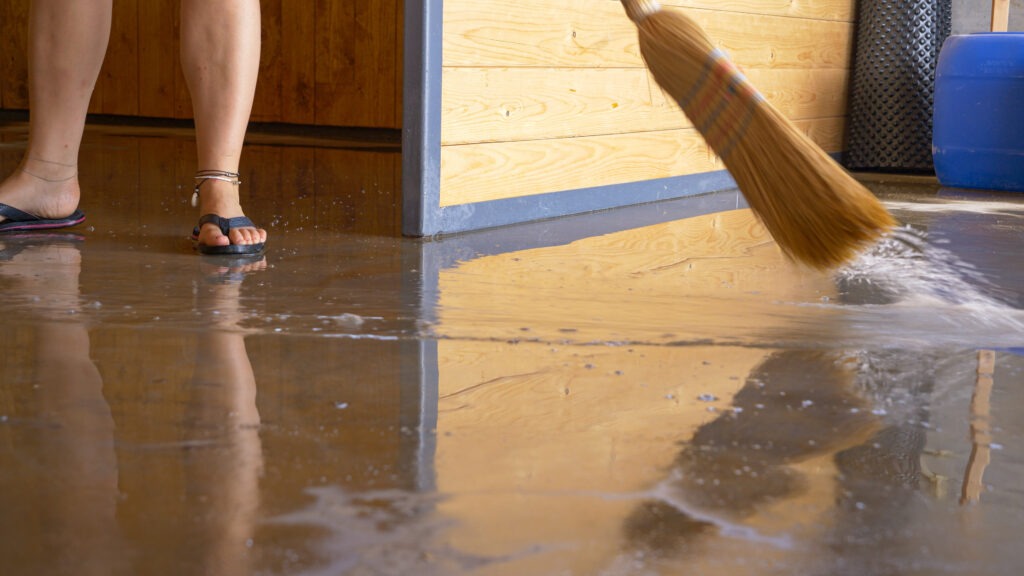Heavy rains are common during the summer months, and if your basement is not properly sealed or protected, it can quickly become flooded. When a natural disaster like a flood strikes, it can seem like the world is ending. But even in the face of such a devastating event, it is important to remember that you are not alone. Some people will help you through this difficult time, and there are things you can do to make the situation easier for yourself and your loved ones. Check out drainage contractors christchurch for more information.
What Causes Basement Flooding?
The basements are more than just storage place; it is where all the plumbing, communication, and electrical lines run. When adequately insulated and furnished, it can also be a playroom, living room, or workspace. However, basements are prone to flooding, which may result in mold, mildew, and other health risks, so it’s not just water damage that you should be concerned about if your basement routinely floods. But if you know what causes flooding, you can stop it from happening, protect your home, reduce the danger, and keep your basement dry. Here are the most typical reasons why a basement floods. Don’t hesitate to learn more by checking out highly recommend.
- Location of the House – One of the most frequent causes of flooded basements is location, particularly if you live in an area prone to flooding or near a stream or river that rises often. Moreover, if your home is situated on a low point, water will flow towards your house.
- A leaking tank or water supply line – Small cracks in the supply line and hot water tank are the most frequent sources of basement flooding. The likelihood of a pipe breaking increases with the outside temperature. When water freezes, the pipe begins to expand gradually but steadily, and when this expansion reaches a critical level, the tanks, tubes, and pipelines start to break. To prevent this from happening, it would be helpful to insulate the pipes by using heat tape and cables. Also, keeping the basement warm always is a big help.
- Poor weatherproofing – Groundwater tends to collect in places with frequent strong downpours, hurricanes, or a lot of snow melting. Basement flooding results from the water rising to the basement level and seeping into tiny gaps or connections between improperly sealed walls and flooring. To prevent water leaks and floods, walls, floors, and foundations must be waterproofed during construction. A good basement waterproofing system, including a sump pump and appropriate drainage, is necessary to guarantee a dry basement. You can either learn how to waterproof your basement yourself or contact a local expert.
- Ineffective Drainage System – A drainage pipe for collecting underground water is called a weeping or drain tile. To prevent water from seeping into your property, it is constructed around the building below the basement floor level. The basement may flood without adequate waterproofing if the weeping tile breaks or deteriorates over time.
- Clogged Gutters – A gutter is essential in every home because it is needed to drain rainwater. However, a clogged gutter may cause water to run off the roof and down the sides of your house. It may collect and leak into the basement, resulting in wood rot or foundation damage. Cleaning your gutters regularly will keep water from building up on your roof. Gutter clogs will also be reduced by installing gutter guards.
The following is a list of seven important things to do when your basement suddenly gets flooded.
1. Contact a Water Extraction and Restoration Company
One of the most important steps to take when your basement floods are to call a water extraction and restoration company. These companies specialize in removing excess water and restoring damaged areas, and they often work directly with insurance providers. Suppose you can get a company that offers a basement waterproofing solution even better. This can prevent future flooding and water damage issues.
Don’t wait too long to call a restoration company – the longer water sits in your basement, the more damage it can cause. Waterproofing Companies Toronto often have 24-hour emergency lines for situations like this, and they can assess the damage and begin the restoration process quickly.
2. Turn Off Power to the Affected Area
If your basement is flooded, there’s a good chance that water has gotten into the electrical system. If you don’t shut off power, you could get an electric shock when you enter the basement – or worse, someone else could touch an electrified object and be seriously injured or killed. So before doing anything else, locate your breaker box and flip all the switches to “off.” If you’re unsure which switch corresponds to your basement, ask a friend or family member for help.
If water is coming into your basement through appliances – such as a washing machine or dishwasher – turn them off at the source by unplugging them from the wall. This will help minimize damage to both the appliance and your home.
3. Remove Standing Water
Basements can quickly fill with water during a flood, making them difficult to remove. The faster you get the water out, the less damage it will cause. Here are some tips on how to remove standing water from your basement:
- Use a wet/dry vacuum or sump pump to remove the water.
- If you do not have access to these tools, consider using buckets or towels to soak up as much water as possible.
- Ensure to stay safe while removing standing water, avoid electrical outlets, and wear protective gear such as rubber boots and gloves.
- Once all the standing water has been removed, dry out the area with fans or dehumidifiers before beginning any repairs or clean-up efforts.
- Keep in mind that it is important to act quickly – standing water can cause damage to walls and floors and increase the likelihood of mold growth.
4. Move Furniture and Belongings Out of the Affected Area
When a disaster like a flood strikes, the last thing you want to do is waste time moving furniture and belongings out of the affected area. But if you can take the time to do it right, it will save you a lot of hassle and heartache in the long run. Start by removing any furniture or objects in direct contact with water. This includes sofas, chairs, tables, beds, dressers – anything that might be damaged by water exposure. If possible, try to move these items to another room in your home until the flooding has subsided.
Next, remove any smaller items from the area that might be damaged by water or mud – pictures, books, knick-knacks, etc. Again, try to move these items to another room in your home until the flooding has subsided.
Finally, move any larger furniture pieces out of the area using whatever means necessary – ropes, tarps, blankets, etc. Be very careful not to damage them further. Once they’re out of the way, you can start cleaning up the mess.
5. Contact Your Insurance Company
When your basement floods, one of the first things you should do is contact your insurance company. Flood damage is usually covered under homeowners’ or renters’ insurance policies, and most insurance companies have a 24-hour emergency line specifically for this type of situation.
The sooner you get in touch with your insurer, the sooner they can assess the damage and get you set up with a restoration company. Remember that most policies have a waiting period before they start to pay out claims, so make sure to make contact quickly.
When you call your insurance company, be prepared to provide them with as much information as possible about the flood. This includes the date and time, how long it lasted, what caused it (if known), and any estimates of damages you have already received.
6. Begin Assessing and Documenting the Damage
Once you’ve contacted relevant professionals for help with cleanup and restoration, it’s time to start assessing the damage yourself (if safe to do so). Take pictures or videos of any damaged possessions and the affected areas of your home.
If possible, document the value and proof of ownership for ruined items – this can be helpful when filing insurance claims. If necessary, separate salvageable possessions from those that cannot be saved.
7. Take Steps to Prevent Future Flooding
Once the initial cleanup and restoration process is underway, it’s important to prevent future flooding in your basement. This could include installing a sump pump, sealing cracks in foundation walls, or redirecting downspouts and gutters away from your home.
Your insurance company may also have recommendations for preventative measures and referrals for contractors who can assist with these tasks. Taking these steps can help minimize the likelihood of future floods – saving you time, money, and stress in the long run.
Flooding can be a devastating event, both for your home and your possessions. But by following these seven important steps, you can make cleaning and restoration easier for yourself. Contact your insurance company as soon as possible, contact a water extraction and restoration company, assess and document damage, and take steps to prevent future flooding. With these measures in place, you can rest assured that your basement will be back to normal in no time.
How to Prevent Basement Flooding
The basement is one of the areas of the house where flooding is most likely to occur. Prevent basement flooding by taking preventive measures rather than waiting until you experience significant water damage. Here are some suggestions to help you avoid basement flooding.
1. Examine Your Yard – You need to understand the cause of the issue to find a solution. When it rains again, stroll around the yard, and check the foundation of your house; make sure it is not surrounded by any surface water pools. If you find any water pools in your area, securely channel the water away from your house. After checking around your yard, you might be able to identify the issues. However, take note that checking the home’s exterior is not enough to stop basement flooding.
2. Regularly check the gutters and downspouts – Ensure there are no obstructions in the downspouts and that the gutters are free of debris. If your home’s downspouts are close to the foundations of your home, you should extend them so that water doesn’t run along the foundation. This may be done with a simple extension you can buy at any hardware shop. Underground piping made of PVC or corrugated metal can also be used to move the water’s discharge point. During a heavy downpour, check all your gutters and downspouts. Check for any leaks where water may be flowing. Even a small leak might become a serious water issue during a severe downpour.
3. Basement Windows Should Be Covered – Windows in the basement may allow water to collect in the space around them. Moreover, debris can quickly obstruct the window from draining well. The water pressure from this can cause leaks and cracks, which can cause basement flooding. The simplest solution is a plain, transparent window-well cover. Your drain will be protected from clogging or overflowing by these plastic bubbles.
4. Fix the Cracks Immediately – If you see any cracks in the basement walls, be sure to have them fixed right away because they could grow into bigger cracks which may cause flooding in the basement. You may repair these yourself, but ensure you have the equipment for a long-lasting remedy. Small cracks may be fixed using epoxy injection kits from a hardware shop. In contrast, foundation walls inside fractures must be patched with masonry coating.
5. Examine Sewer System – While preventing basement floods is crucial, cleaning up your tank and floor drain is equally important. Your drainage systems will inevitably clog without routine cleaning, leaving a huge mess in your house. A specialist can determine if you only need a thorough cleaning or a more extensive repair. The simplest method to avoid a backup is to keep an eye on what you flush down the toilet. Paper towels, baby wipes, and trash are just a few items you should never flush.




